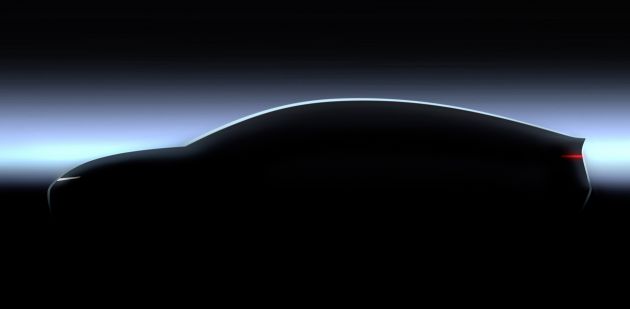With Volkswagen still being focused on fleshing out its ID. range of electric vehicles, its future Project Trinity flagship is still a ways away from becoming a reality. However, we are beginning to understand a few details about the car well before its 2026 on-sale date, courtesy of Autocar.
As previously reported, the new car is aimed at setting new standards in range, charging speed and autonomy and will change the way Wolfsburg builds and sells vehicles. Per the British publication, the Trinity is one of three “speedboat” programmes that will accelerate the development of technologies, the other two being the related Apollon SUV and flagship Artemis sedan projects, both under Audi.
Project Trinity will also take the form of a flagship sedan, albeit one that leads the brand in terms of technology rather than size or luxury. That said, an early teaser showed us a low-slung coupé-esque model with a long, sweeping roofline that should maximise aerodynamic efficiency and occupant legroom. Key to the design is a new Scalable Systems Platform (SSP) that will first make its debut on the Artemis.
The new architecture effectively combines the ID. models’ Modular Electric Drive Matrix (MEB) and the Premium Platform Electric (PPE) jointly developed by Audi and Porsche. It is being designed to accommodate a wider range of vehicles compared to the other two and will eventually underpin around 80% of the group’s models. Notably, it is being developed as a “flat” platform to allow for lower, sportier vehicles.
To achieve the Trinity’s range and charge speed targets, SSP will make use of Volkswagen’s new battery design concept, which is capable of accommodating cells made with various anode materials to suit different needs in terms of range and charging. The platform will also incorporate the brand’s next-generation software, fully integrated with the car’s mechanicals.
Volkswagen’s bespoke VW.OS – which was plagued by problems that delayed the launch of the ID.3 hatch – will enter its second iteration, VW.OS 2.0, with the launch of the Artemis in 2024. Volkswagen says that developing its own software will be instrumental in its quest for technological supremacy, and it’s claimed that the next version will feature increased levels of connectivity and will make use of pooled date gathered from other connected cars from the group.
This vehicle-to-everything (V2X) communication will eventually enable the Trinity to offer Level 4 autonomous driving, gathering information not just from other vehicles but also roadside infrastructure to provide true self-driving capability on certain roadways. The car will, however, launch with Level 2 capability but with the supporting sensors and hardware already in place.
Autocar said that Level 4 autonomy, coupled with the long range, will enable the Trinity to feature a “more conceptual, open and spacious interior” that will allow occupants to relax or engage in other activities. “If Trinity is self-driving on the motorway, then what are you doing in that car?” asked Volkswagen brand CEO Ralf Brandstätter. “The passenger compartment of Trinity will be geared towards the needs of people to make use of that extra time.”
The technology on board has another benefit for the company – it will be able to drastically simplify the variety of vehicles it will have to build, which would increase economies of scale, slash prices and get the cars to customers quicker. All units will feature identical sensors, systems and hardware, with buyers only being able to choose the battery size, colour and wheel design.
In return, they’ll have to enable functions that are locked out by the vehicle’s software, ordering them via either a smartphone app, a website or the infotainment system. It’s not unheard of – BMW already offers features such as auto high beam and Apple CarPlay through its ConnectedDrive store – but Volkswagen is taking the approach to a whole new level with an array of services up for purchase or subscription.
Going down this route will provide huge savings by minimising options, speed up production times and cut costs by reducing the number of different components shared across the group. It will also enable Volkswagen to continue to profit from the car once it is sold, as the features unlocked by the previous owner will stay with that owner – meaning that used car buyers will have to purchase those features themselves.
The company is justifying the move by saying that buyers will benefit from a simplified sales process and the freedom to pay only for the features they want, rather than optioning packages containing functions they don’t need. A reduction in variants and options will also improve resale value, it claims.
All this will allow Volkswagen to meet a target price of €35,000 (RM173,100), although buyers will then have to spend quite a bit more in unlocking features. The Trinity range and autonomy mean that it will augment, rather than supplant, the ID. family, and while a name has yet to be confirmed, it’s unlikely to utilise the ID. moniker. However, the technology will likely filter down to next-gen ID. cars and future EVs.
The post Volkswagen Project Trinity details – new SSP platform, Level 4 autonomous driving, pay-as-you-go features appeared first on Paul Tan's Automotive News.





0 Comments